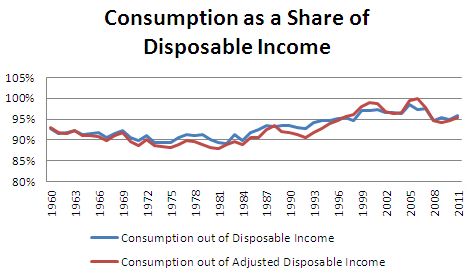December 02, 2012
A NYT editorial today argued that helping out underwater homeowners is essential to the recovery. This does not make any sense as can be seen with simple arithmetic.
There are roughly 11 million underwater homeowners. Suppose that eliminatiing all of their underwater debt caused them to increase spending by an average of $10,000 per family per year. This would be a very substantial increase in spending for a group that has a median income of close to $70,000. Depending on the whether we use the Core Logic estimate of underwater equity ($700 billion) or the Zillow estimate ($1.1 trillion), it would imply a wealth effect of between 10 and 15 cents on the dollar, which is roughly 2-3 times conventional estimates of the wealth effect.
Even in this case, the increase in spending would still come to just $110 billion a year. Assuming a multiplier on this spending of 1.5 that get us to $165 billion in additional output or a bit more than one-sixth of the gap between potential and actual GDP. That’s helpful, but far from getting us back to full employment. And given that the actual impact is more likely to be about half of this size, it’s pretty hard to come up with a story where underwater homeowners provide the key to recovery.
In fact, consumers are spending at an unusually high rate relative to their disposable income. It is just lower than during the consumption boom years at the peak of the housing bubble.

Source: Bureau of Economic Aanlysis.
There are still good reasons for helping underwater homeowners, as I’ve long argued. But this is not what is holding back the recovery.







Comments